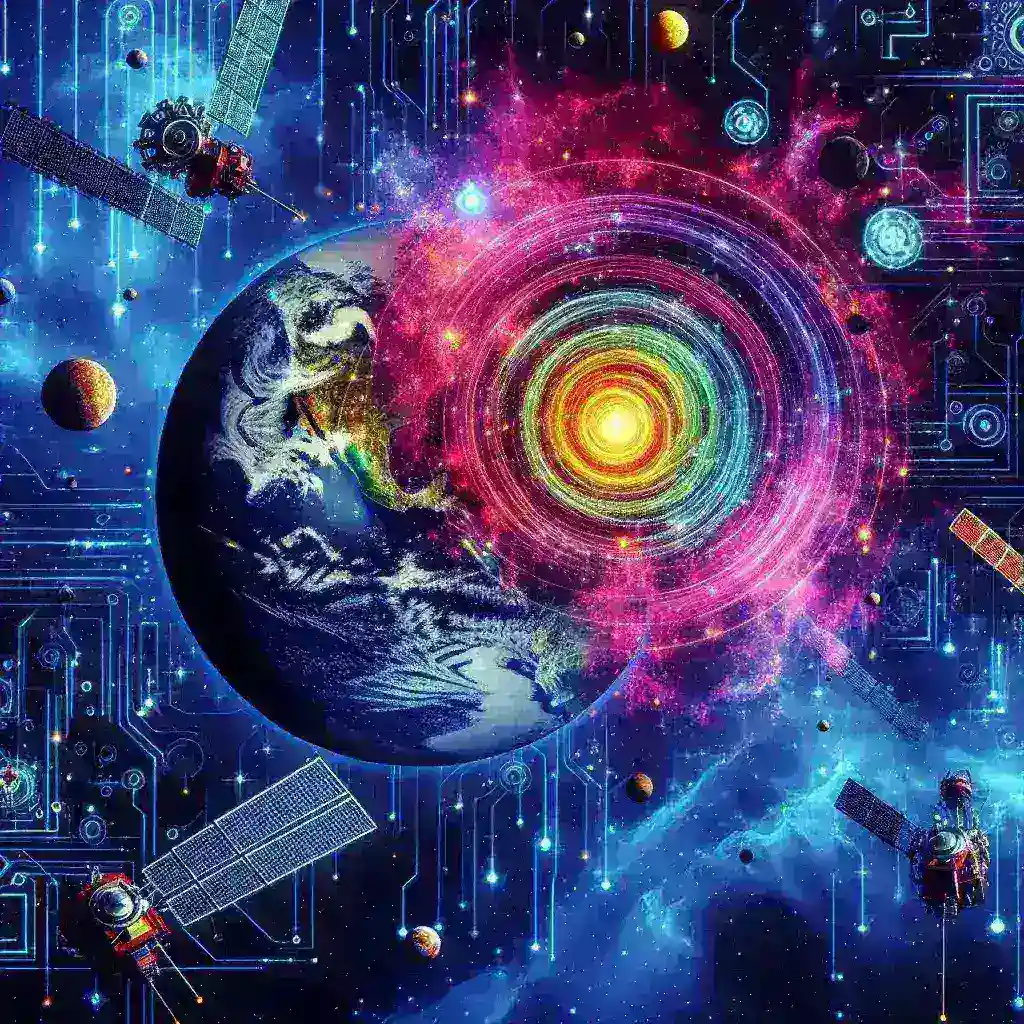Introduction
In an age where technology reigns supreme, the intersection between artificial intelligence (AI) and space science has become a revolutionary frontier. One area where AI is making significant contributions is in the forecasting of planetary magnetic storms, which can have profound effects on Earth satellites. This article delves into how AI algorithms are employed to predict these magnetic events, their implications for satellite operations, and the broader impact on technology and communication.
Understanding Planetary Magnetic Storms
Planetary magnetic storms, often referred to as geomagnetic storms, are disturbances in the Earth’s magnetosphere caused by solar activity. These storms can result from solar flares or coronal mass ejections (CMEs), where large amounts of plasma and magnetic fields are released from the sun’s corona. When these charged particles reach Earth, they can induce electric currents and affect satellites, communication systems, and even power grids.Understanding the nature and causes of these storms is crucial for developing effective forecasting methods.
The Science Behind Magnetic Storms
Geomagnetic storms are classified into categories based on their intensity, ranging from minor disturbances to major storms that can have significant effects on technology. The key factors contributing to these storms include:
- Solar Winds: Streams of charged particles emitted by the sun.
- Coronal Mass Ejections (CMEs): Massive bursts of solar wind and magnetic fields rising above the solar corona.
- Interplanetary Magnetic Field (IMF): Magnetic fields carried by solar wind that can interact with Earth’s magnetic field.
AI Algorithms: The Game Changer
Traditional methods of forecasting geomagnetic storms rely on observational data and statistical analysis. However, these methods often lack the speed and precision needed to respond to real-time solar events. AI algorithms, particularly machine learning and neural networks, have emerged as powerful tools that can process vast amounts of data quickly and accurately.
How AI Algorithms Work
AI algorithms analyze historical data from various sources, including solar observatories, satellites, and ground-based sensors, to identify patterns and correlations that may indicate an upcoming storm. By training on this data, AI models can predict the likelihood, timing, and intensity of geomagnetic storms.
Key Techniques Used
- Supervised Learning: Algorithms are trained on labeled datasets, learning to associate input features with storm occurrences.
- Unsupervised Learning: Algorithms analyze data without prior labeling, identifying patterns in solar activity.
- Deep Learning: Neural networks with multiple layers that can learn complex representations of data.
Real-World Applications
The deployment of AI in forecasting geomagnetic storms has profound implications for various sectors:
- Aerospace: Satellite operators can receive timely alerts about potential disruptions, allowing them to adjust satellite operations accordingly.
- Telecommunications: Improved forecasts can help prevent communication outages caused by magnetic storms.
- Power Grids: Utilities can take preventative measures to protect infrastructure from induced currents.
Case Studies
Several organizations have successfully implemented AI-based forecasting systems:
- NoAA’s Space Weather Prediction Center: Utilizes machine learning algorithms to improve the accuracy of storm forecasts.
- The European Space Agency (ESA): Conducts research on AI applications in space weather predictions.
Challenges and Limitations
While the potential of AI algorithms in forecasting geomagnetic storms is promising, challenges remain:
- Data Quality: The accuracy of forecasts is heavily dependent on the quality and comprehensiveness of the data used.
- Algorithm Bias: If the training data is biased, the AI model may produce skewed results.
- Interpretability: AI models, especially deep learning networks, can be complex and challenging to interpret, leading to difficulties in decision-making.
The Future of AI in Space Weather Prediction
As research continues and technology evolves, the future of AI in space weather prediction looks bright. Enhanced data collection methods, such as advanced satellite missions and ground-based observatories, will provide richer datasets for AI algorithms to learn from. Moreover, collaboration between global space agencies and research institutions can drive innovation and improve forecasting techniques.
Emerging Trends
Some trends expected to shape the future of AI algorithms in forecasting geomagnetic storms include:
- Integration with Other Technologies: Combining AI with IoT devices will lead to more comprehensive monitoring systems.
- Real-Time Processing: The ability to analyze data in real time will enhance response strategies for satellite operators.
- International Collaboration: A global approach to data sharing and algorithm development will ensure more robust storm forecasting.
Conclusion
The integration of AI algorithms in forecasting planetary magnetic storms represents a significant advancement in our ability to predict and mitigate the impacts of these events on Earth satellites. With the potential to enhance satellite operations, improve communication networks, and protect critical infrastructure, AI is becoming an indispensable tool in the realm of space weather prediction. As we continue to explore the cosmos, the collaboration between artificial intelligence and space science will undoubtedly pave the way for safer and more efficient technological advancements.



